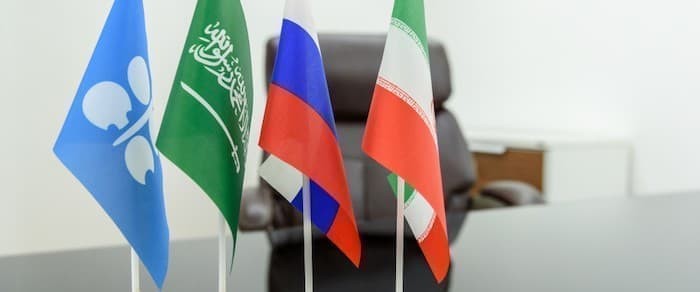Now Reading: OPEC+ Stuns Market With Larger Than Expected Output Hike
-
01
OPEC+ Stuns Market With Larger Than Expected Output Hike
OPEC+ Stuns Market With Larger Than Expected Output Hike

Tom Kool, who graduated in International Business from Amsterdam’s Higher School of Economics, currently serves as the Head of Operations at Oilprice.com.
In a surprising move over the weekend, the crude oil markets faced a setback as OPEC+ announced a larger-than-expected output increase for June. This decision, made during a virtual meeting on Saturday, was led by major producers like Saudi Arabia and Russia, who agreed to boost collective output by 411,000 barrels per day (bpd) – nearly three times the initially planned volume.
This escalation in production comes after a similar surge was announced for May and reflects a significant shift from OPEC+’s previous efforts to support oil prices. Saudi Arabia seems to be endorsing a strategy of lower prices to discipline members such as Kazakhstan and Iraq, who have consistently exceeded their production quotas.
According to Jorge Leon of Rystad Energy, this move by OPEC+ is seen as an attempt by Saudi Arabia to enforce compliance and align itself with President Trump’s preference for lower oil prices. Trump’s upcoming visit to the Middle East this month may further solidify energy cooperation between the US and OPEC+.
Oil prices were already facing downward pressure, with Brent trading close to $61 per barrel, a four-year low, on Friday. Following OPEC+’s decision, prices plummeted by an additional 6%, intensifying concerns fueled by trade tensions and weakening economic indicators.
Goldman Sachs and Standard Chartered have both adjusted their oil price forecasts downward for 2025 and 2026, attributing the revisions to increased OPEC+ supply and the impact of Trump’s tariffs. Market sentiment has been further dampened by fears of a global recession, prompting JPMorgan to raise recession odds to 60% for the year.
Despite OPEC+’s justification of the output increase based on “healthy market fundamentals,” many view this move as a means to secure market share and ensure compliance among its members. As Saudi Arabia and other key producers prepare to reassess the situation in June, it is evident that OPEC+ is shifting away from defending high oil prices, signaling potential volatility ahead in the oil markets.






